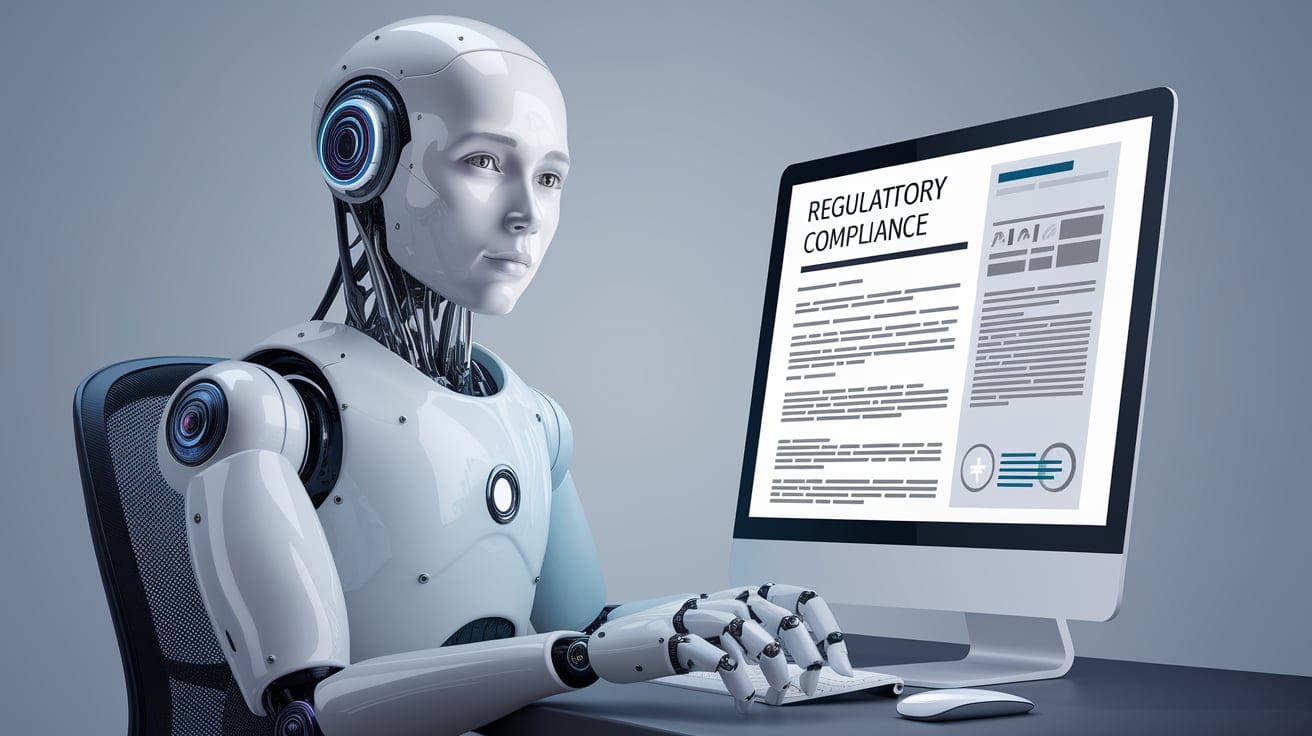

Are you ready to disrupt with AI? Join our Hackathon today! Click to Register
By WebOsmotic Team | Published on February 24, 2025
Summarize Article

Table of Contents
ToggleIn a world where companies are increasingly dealing with intricate regulatory landscapes, Generative AI for Regulatory Compliance is becoming an effective solution to make compliance smoother, reduce risks, and enhance efficiency. Right from automating compliance processes to creating reports and ensuring compliance with the most current regulations, generative AI is transforming the dynamics of compliance management.
This blog discusses what generative AI is, how it operates, its advantages for regulatory compliance, integration strategies, practical applications in the real world, best practices, and emerging trends.
| Approach | Description |
|---|---|
| AI-Powered Regulatory Intelligence | Tracks evolving compliance requirements in real-time. |
| AI-Based Document Processing | Extracts key information from legal documents. |
| Compliance Chatbots & Assistants | Provides regulatory guidance through AI-powered bots. |
| Predictive Compliance Analytics | Forecasts compliance risks and mitigates breaches. |
| AI-Driven Automated Auditing | Conducts audits, detects anomalies, and flags suspicious activities. |
Generative AI is artificial intelligence models that are capable of generating content, predictions, and solutions from the data they have been trained on. These models employ deep learning methods, specifically neural networks such as Generative Adversarial Networks (GANs) and Transformer models (such as GPT), to generate human-like text, images, code, and more.
In regulatory compliance, generative AI can:
Through the use of massive datasets, generative AI learns and evolves constantly to keep pace with changing regulatory environments, making organizations compliant with shifting generative AI regulations and generative AI laws.
Using generative AI for compliance has several benefits:
Automates Compliance Tasks – Eliminates the need for manual workloads by automatically generating reports and evaluating risks.
Improves Accuracy and Consistency – Eliminates human errors by guaranteeing regulatory compliance.
Provides Real-Time Monitoring – Detects risks before escalation.
Enhances Decision-Making – Provides insights from extensive regulatory information.
Reduces Costs – Reduces operational costs through efficient compliance workflows.
Generative AI is employed by banks and financial institutions to track transactions, identify fraud, and comply with anti-money laundering (AML) laws.
AI assists in tracking regulatory compliance for medical research, data privacy regulations (e.g., HIPAA), and drug approval procedures.
Generative AI helps companies comply with worldwide data protection regulations, including GDPR and CCPA, by automating compliance checks and policy creation.
Corporate legal teams and law firms use AI to analyze contracts, identify regulatory clauses, and maintain compliance with legal requirements.
Companies use AI-based solutions to monitor ESG compliance, produce sustainability reports, and maintain compliance with environmental requirements.
✓ Understand Regulatory Frameworks – Ensure compliance with current generative AI legislation.
✓ Maintain Transparency – Explainable AI-generated decisions.
✓ Ensure Data Security – Safeguard sensitive information and adhere to data privacy regulations.
✓ Update AI Models Regularly – Align AI tools with evolving compliance requirements.
✓ Combine AI with Human Oversight – AI promotes efficiency but needs human verification for intricate situations.

Solutions for Regulatory Compliance through Generative AI demand expertise and innovative solutions. WebOsmotic is an expert in AI-powered compliance automation customized to your business requirements. Allow us to guide you through the regulatory complexity with assurance.
Contact us now to learn about AI-powered compliance solutions!
Generative AI makes compliance processes more automated, keeps track of changes in regulations, identifies risks, and maintains legal compliance through insights driven by AI.
Financial services, healthcare, law, environmental, and data protection sectors highly rely on AI-based regulatory compliance.
Possible risks are data privacy issues, AI bias, and the requirement for human involvement to understand nuanced regulatory demands.
AI-generated compliance options must be adapted to suit specific industry laws as well as ethics standards.
No, human expertise is enhanced by AI to perform mundane jobs, but there is a continuing need for humans to decide as well as handle complex regulations.
Unlock exclusive insights and expert knowledge delivered straight to your inbox